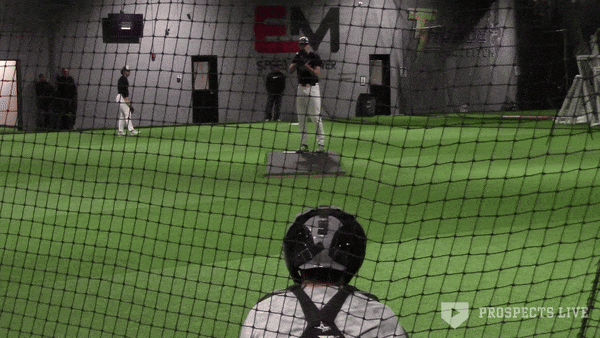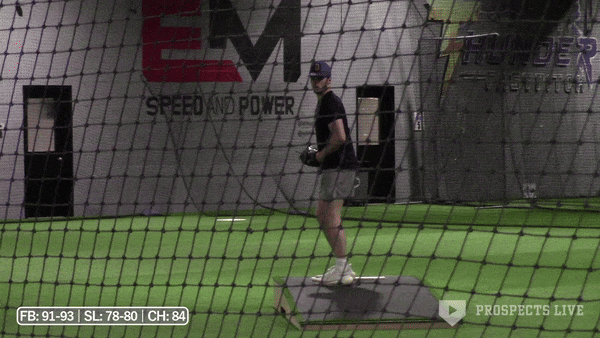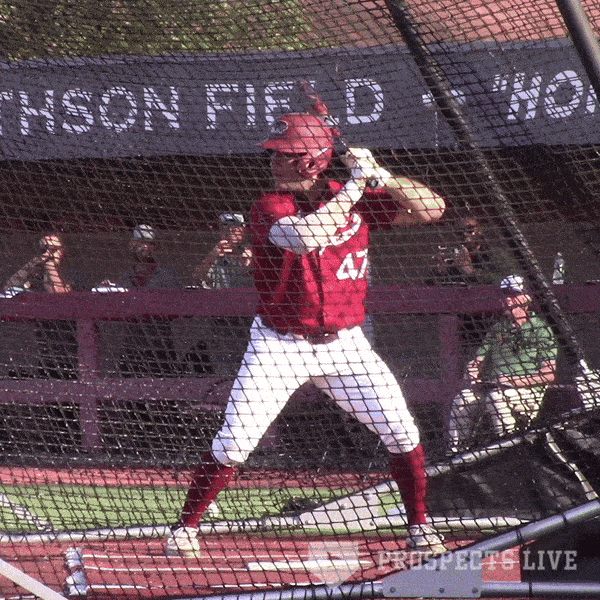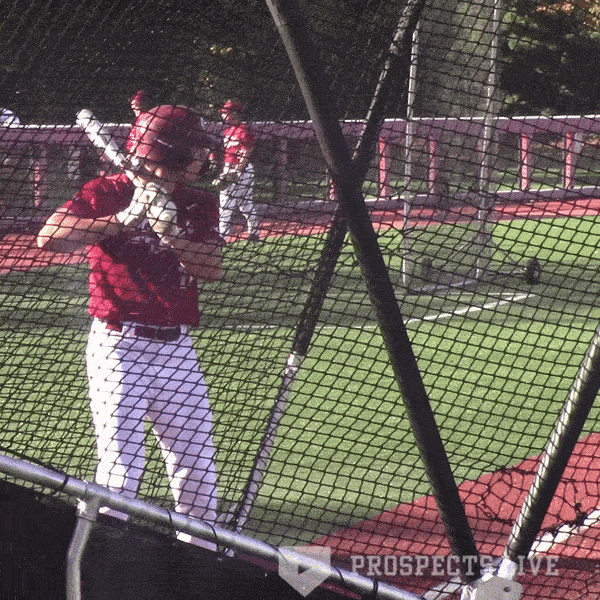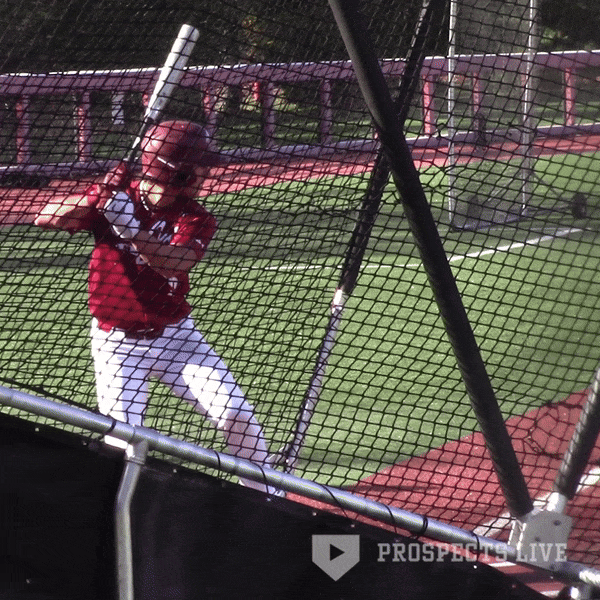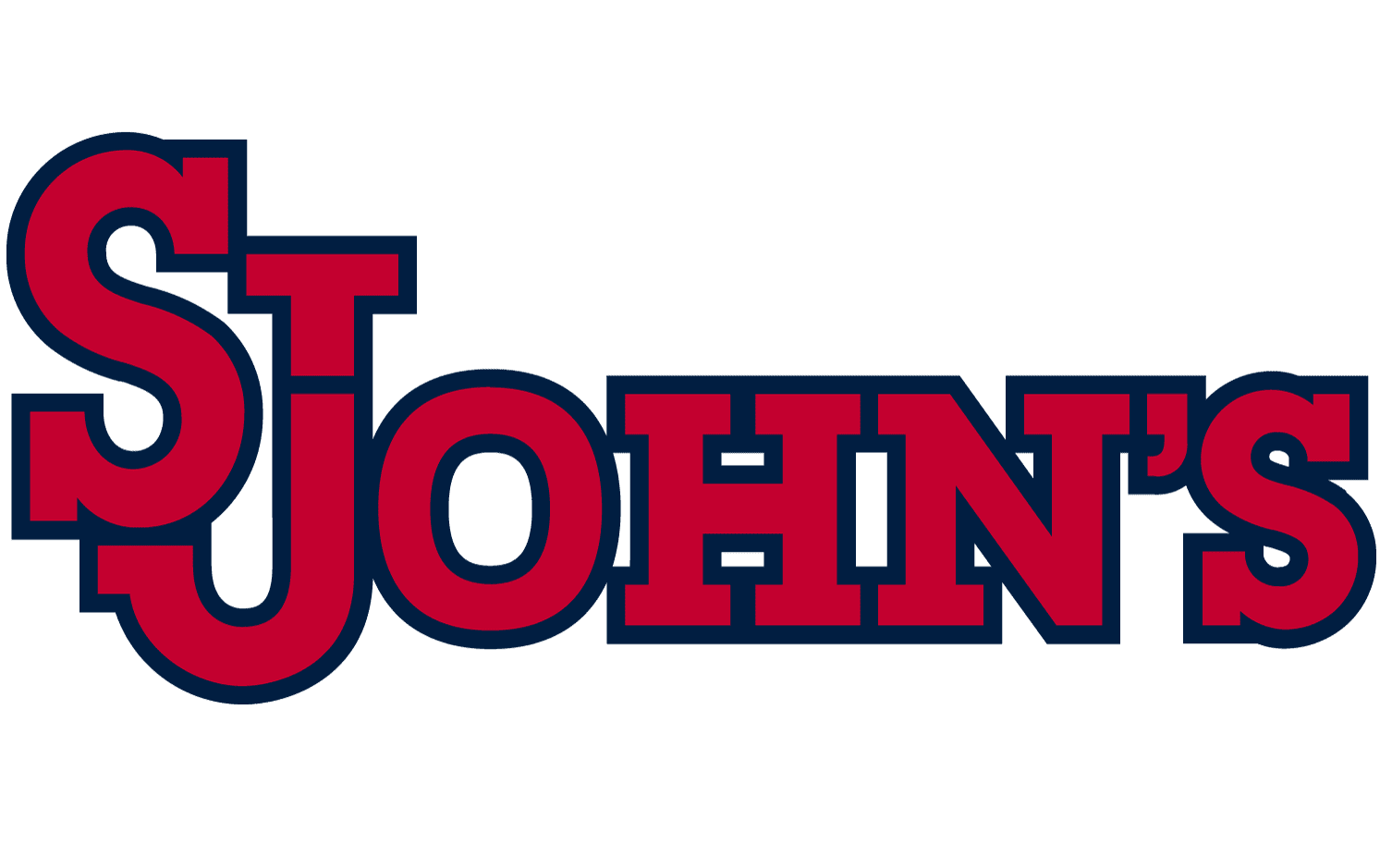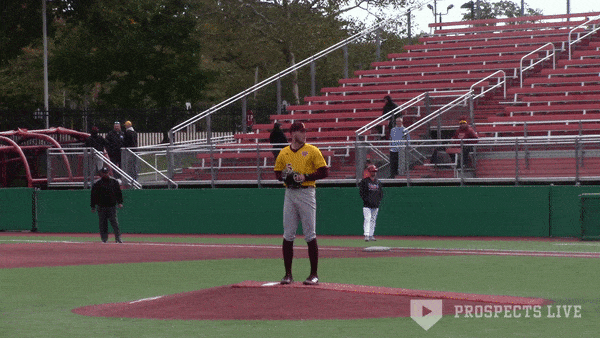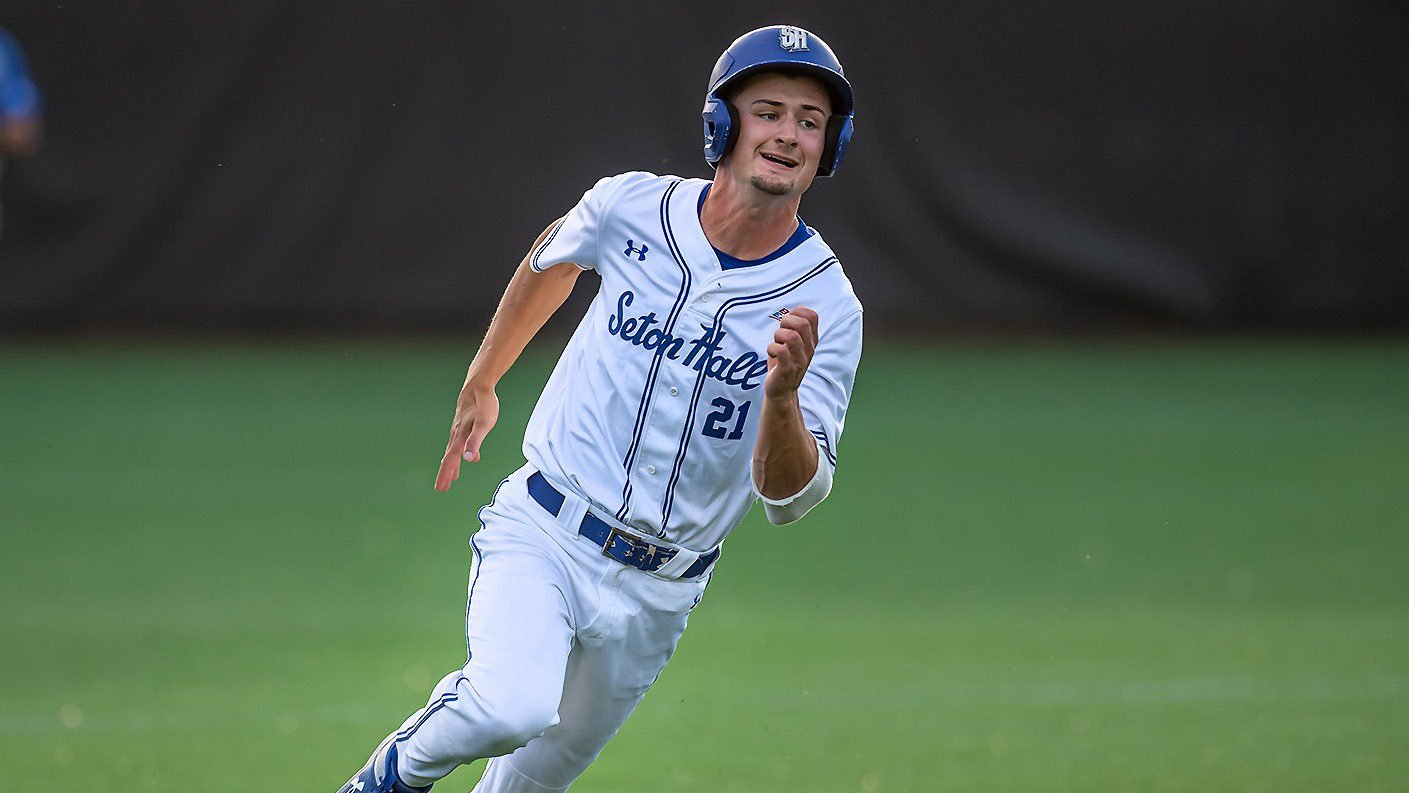Recca's Fall Notebook Part 2: Lafayette v East Stroudsburg Scrimmage
I joined colleague Jake Bargery on a rainy, overcast day to watch Lafayette College’s scrimmage against DII East Stroudsburg. Not having seen either school in the 2024 season, this was a great chance to get familiar with both Pennsylvania programs.
Lafayette’s baseball program often loses top talent to the transfer portal, with two of their hardest-throwing pitchers, Luke Craytor (Virginia Tech) and Mason Koczwara (Florida SouthWestern), leaving this offseason. The previous year, it was Alex Walsh (Maryland), and before that, future major leaguer Jake Bloss (Georgetown). Building a solid pitching staff will be challenging, but several promising arms show potential for growth. On offense, Lafayette brings more stability with a mix of proven hitters and emerging talent, led by JR Ethan Swidler, a potential Patriot League star and draft prospect. The lineup’s strength should allow Lafayette to compete well in-conference, and if the pitching develops, they could be a dark horse.
East Stroudsburg, a consistent DII contender, competes in the highly regarded PSAC conference alongside top programs like Millersville, Seton Hill, and West Chester. Draft talent coming out of the PSAC in any given year is not uncommon, and it was only two drafts ago that ESU had a player chosen in RHP Tom Reisinger. The Warriors have finished with a winning percentage of 67% or higher in each of the last three seasons. Longtime ace Brent Francisco, hard-throwing Nick McAuliffe, and lockdown reliever Carson Renner (now at Penn State) will be tough to replace, but Coach John Kochmansky and company have a knack for piecing together highly effective pitching staffs. The Warriors have finished no lower than 3rd in ERA from 2022-2024 in the PSAC. Despite some turnover on offense, several veteran players look poised for breakout seasons. Whether future pros are in this ESU squad remains to be seen, but they’re a respected program with strong scouting interest year after year.
Lafayette College
ETHAN SWIDLER
Position: Catcher
Year: JR: | Draft Age: 21.07
B: Right | T: Right
H: 6’1 | W: 200
Photo Credit: Hannah Ally
The Leopards offense will be led by JR catcher Ethan Swidler. Getting a live look at Swidler prior to the 2025 season was a priority after he made the All-Patriot League First Team last spring. Swidler split time between catcher and first base as a sophomore and finished the year with a .327/.460/.572 line which included 9 homers and more walks (39) than strikeouts (35) in 202 plate appearances. Beyond the box score stats, Swidler also stood out in several data categories:
Average EV: 90 MPH | 85th percentile
90th Percentile EV: 105 MPH | 81st percentile
Barrel Rate: 24% | 78th percentile
Contact Rate: 82% | 79th percentile
Chase Rate: 12.7% | 98th percentile
Swinging Strike Rate: 6.1% | 89th percentile
That’s an extremely well-rounded offensive game that covers contact ability, power, and plate discipline. In 2024 there were two other Patriot League hitters with similarly versatile data profiles, Bucknell’s Sean Keys and Lehigh’s Rafe Perich. Keys was drafted in the 4th round by the Blue Jays while Perich went to the Rangers in the 7th. Here’s how the three stack up:
Obviously, Swidler is in good company. A continuation of this level of production will be enough to put him on the draft radar though whether or not he is ultimately a day-two selection like Keys and Perich will depend on other factors. But just looking at Swidler the size, physicality, and strength at the plate are clear. He starts out in a crouched stance, somewhat closed, with high hands, and the bat angled slightly upwards. Swidler coils up with a short stride, really digging in his front foot to the ground to generate good torque and plenty of bat speed. Swidler was walked multiple times during the game and it was evident from my view behind home plate that Swidler was identifying pitches early, allowing him to remain in the strike zone. He did square one pitch (GIF below), a high breaking ball that he lined directly at the shortstop. While a collection of plate appearances resulting in walks isn’t great for content, it was useful information for both myself and Jake. Overall, the physicality, the approach, and the few swings we did see were enough for us to determine that Swidler isn’t just a player who looks good on a spreadsheet, there are legitimate tools for the next level.
Of course, the burning question for amateur catching prospects will be whether or not they can stick at the position. Last year Swidler played 31 games at first base and 19 at catcher. He was behind the plate during this scrimmage and I have to imagine that he spends the majority of his time back there in 2025. Now I’m no catching expert. I never played the position and I rely heavily on other sources such as scouts and coaches when trying to piece together a player’s defensive profile. In other words, take my opinion with a grain of salt. However, sometimes you “know it when you see it” and in this look, I did not see it. Swidler made some good blocks in the dirt but it was a little inconsistent. There were some good flashes on the receiving end but again, it wasn’t consistent. Swidler showed good arm strength but the throwing mechanics were, you guessed it, inconsistent. I included some of his receiving and a throw down between innings in the video below. Context is important here. Swidler is still relatively inexperienced at the position and this was a fall ball scrimmage on a wet, dreary day. Making a firm call on his defensive future based on this single game would be a mistake. The way I look at it, this game sets a baseline. We can compare where he was on this day to what he looks like in April or May. Is there progress? How much? Will it continue? Until we’re able to answer those questions, Swidler’s future defensive home remains up in the air. But going back to Sean Keys and Rafe Perich for a moment, it’s not like those two were defensive stalwarts either. Their bats carried the overall profile and the same will be true for Swidler. He’ll be an early favorite for Patriot League Player of the Year and a player who scouts will check up on throughout the spring.
Outside of Swidler, SR third baseman Michael Zarrillo and SO shortstop Matt Colella should be integral pieces of the everyday lineup. Zarrillo is a switch hitter with superb physicality at 6’1-220. He has well above-average power and a strong arm that fits at the hot corner. He’ll need to reign the swing-and-miss but Zarrillo has 17 homers over the past two years and is a double-digit home run threat for 2025. Colella has a very different profile than Zarrillo with a smaller 5’9-175 build. Colella finished his freshman year with a .252/.368/.329 line and an impressive 89% contact rate. He lacks impact power but he makes pitchers work and puts pressure on the defense with his bat-to-ball ability. He was adequate defensively at shortstop but the profile might be a better fit at second base. Colella is a good bet to improve substantially during his second year on campus.
The final player who stood out offensively for Lafayette was third-year outfielder Bode Grieve. Grieve is the son of nine-year veteran and 1998 Rookie of the Year, Ben Grieve. Bode has made stops at Baylor and New Mexico State but never received game action with either squad. That will certainly change this year as Bode looked like a quality athlete with good size at 6’3. He was on base often with a couple of walks and a pulled line drive double down the left field line. We’ll have to see how he holds up over the course of a full season, but Grieve is a nice wild card for a program like Lafayette. Grieve has some upside and could bolster the top of the Leopards lineup this spring.
SR RHP Joe Skapinetz made the start for Lafayette and received two innings of work. The 6 '5 righty topped out at 92 MPH and sat in the 89-91 MPH range. He also threw what appeared to be a mid-80s cutter, an upper-70s slider that he used to record two strikeouts and one changeup. He moved well down the mound for his size, getting well above average extension in his delivery which allowed his stuff to play up. Skapinetz hasn’t had much success in previous seasons but looked like a potential rotation anchor in this viewing.
A handful of underclass arms showed some positive traits. RHP Sophomore Tristan Helmick is probably the one with the most upside and draft potential. He’s highly projectable with a lanky build at 6’6-185. Helmick gets extended well and flashes a heavy sinker that sits around 87 MPH, topping out at 90. He filled out his arsenal with a low 80s cutter, a mid-70s curveball with above-average depth, and a low 80s changeup. None of his secondaries stood out in this appearance but there is potential with each offering as he continues to grow and begins to harness his pitchability. Helmick is a work in progress, but there’s loads of development potential, making him a good name to follow. Joining Helmick as potential follows are righties Ben Waterman and Kellen Moore. Waterman is a sophomore transfer from DIII Hamilton College with a solid 6’2-190 build. Waterman showed decent feel for a three-pitch mix and was up to 90 MPH while sitting 87-89. Moore meanwhile, is a prized recruit for the Leopards and looks ready to contribute out of the gate. The 6 '4 New Jersey native sat 89-90 MPH with a highly effective changeup in the 80-82 range while also mixing in a mid-to-upper 70s slider.
Tristan Helmick, RHP
Sophomore
Photo Credit: Hannah Ally
East Stroudsburg
Getting the Start for ESU was Charleston Southern transfer RHP Ryan Cavanaugh. The redshirt FR has good length to his leaner frame and has the potential to be a long-term building block for Coach Kochmansky’s pitching staff. He opened up in the 89-90 range before sitting 86-88 in the second inning. Cavanaugh has been up to 92-93 in the past and with the physical projection that he possesses, it would not be surprising if he was sitting in that low 90s area in the future. He complimented his fastball with a slider in the 82-84 range that had cutter shape, a 76-78 MPH slurve, and a changeup between 78-81 MPH.
Two more righties that caught my attention were JR Jaden Newton and SR Caden Parker. Newton showed the most velocity for any ESU arm touching 92 MPH while working in a low 80s slider that showed flashes of being an effective weapon and a changeup in a similar velocity band. Consistent strikes have been a concern in the past but the 6 '4-215 righty has quality arm strength and the blueprint for a competent three-pitch mix. Meanwhile, Caden Parker showed why he was such an effective weapon late in games for the Warriors in 2024. The UMES transfer secured 12 saves during his first season with ESU with a 2.25 ERA. He won’t blow you away with velocity but he mixes his 88-90 MPH fastball and 78-80 MPH slider effectively with plenty of deception in his delivery. Finally, I liked what I saw from SO Peyton Brannock. The projectable 6’1 lefty tossed two shutout innings during the scrimmage while striking out a pair of batters. Brannock is a good mover on the mound and I liked the slight crossfire action to his delivery. He topped out at 89 MPH and sat 87-88 with good life. He also showed solid feel for spinning his upper 70s curveball and added a changeup that flashed some fading action. It’s more control over command for now but Brannock has a lot of positive traits and his development will be worth tracking over the next year and change.
Shanley Wall, CF
Junior
Photo Credit: Dave Janosz
The Warriors offense is led by redshirt JR first baseman Parker Frey. The 6’2-225 lefty slugger is coming off a strong 2024 season that saw him hit .339/.425/.514 with 5 homers and more walks (26) than strikeouts (16). While there is plenty of raw pop, Frey doesn’t sell out for power as he’s more than comfortable taking what pitchers give him. He scorched a ball the opposite way and another towards the middle of the field for extra-base hits. It’s a mature approach from a seasoned hitter with enough strength to boost his home run total in a major way this spring. The biggest hit of the day was courtesy of redshirt SO infielder Walker Zampella. A righty bat with a strong, thick build, Zampella smacked a no-doubter to his pull side. He’s coming off a .309/.413/.463 season and has experience playing both up the middle positions on the dirt. Lastly, JR centerfielder Shanley Wall will be a major focal point of the Warriors offensive attack. Wall is the younger brother of former St Joseph’s OF Conlan Wall who was a spark plug and consistent performer throughout his college career. Shanley is in the same mold. He has a short, stout build at 5’9-185 and gets the most out of his physical tools. He’s a pesky hitter who is coming off a phenomenal 2024 season that saw him hit .401/,472/.553 with 4 homers, 21 extra-base hits, and a 22:12 B-to-K ratio in 233 plate appearances.











